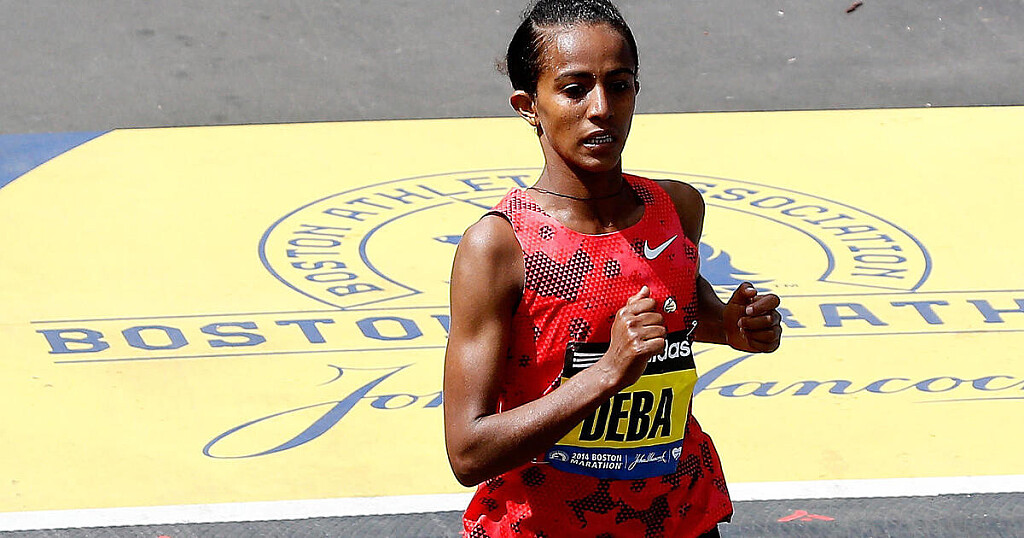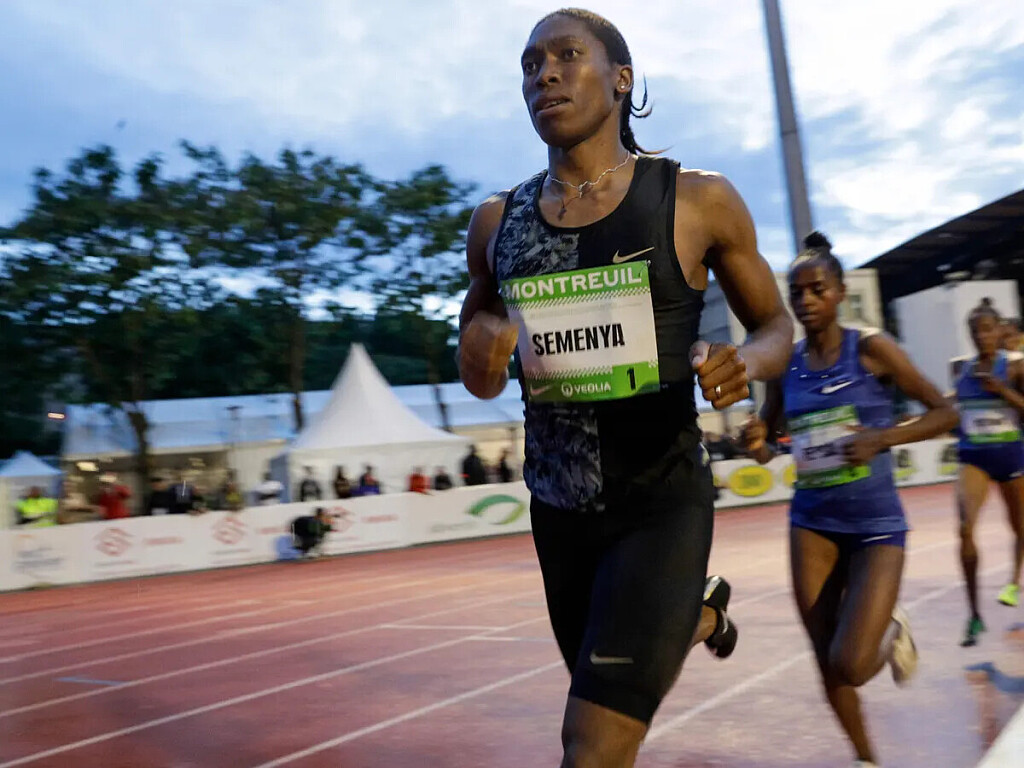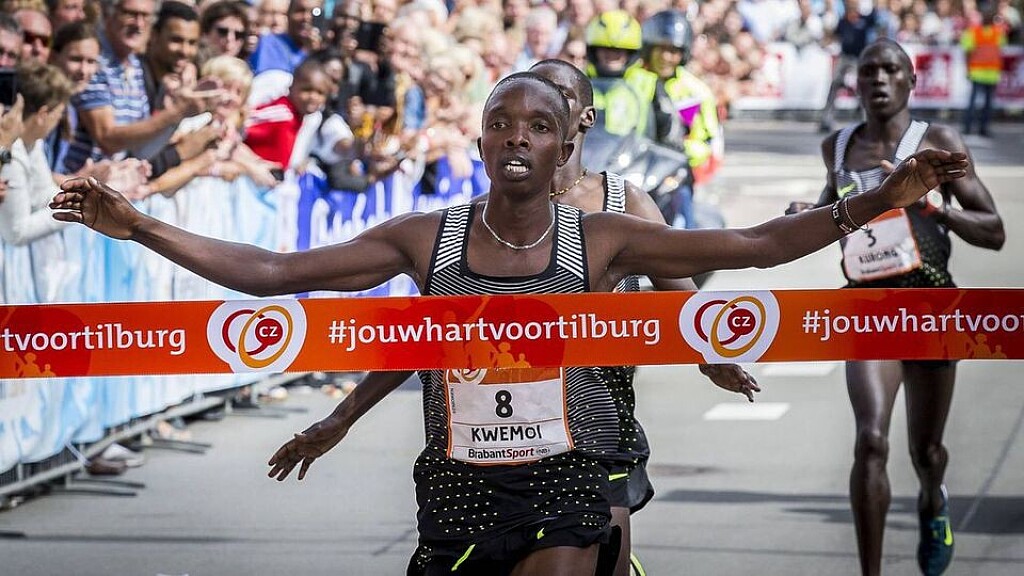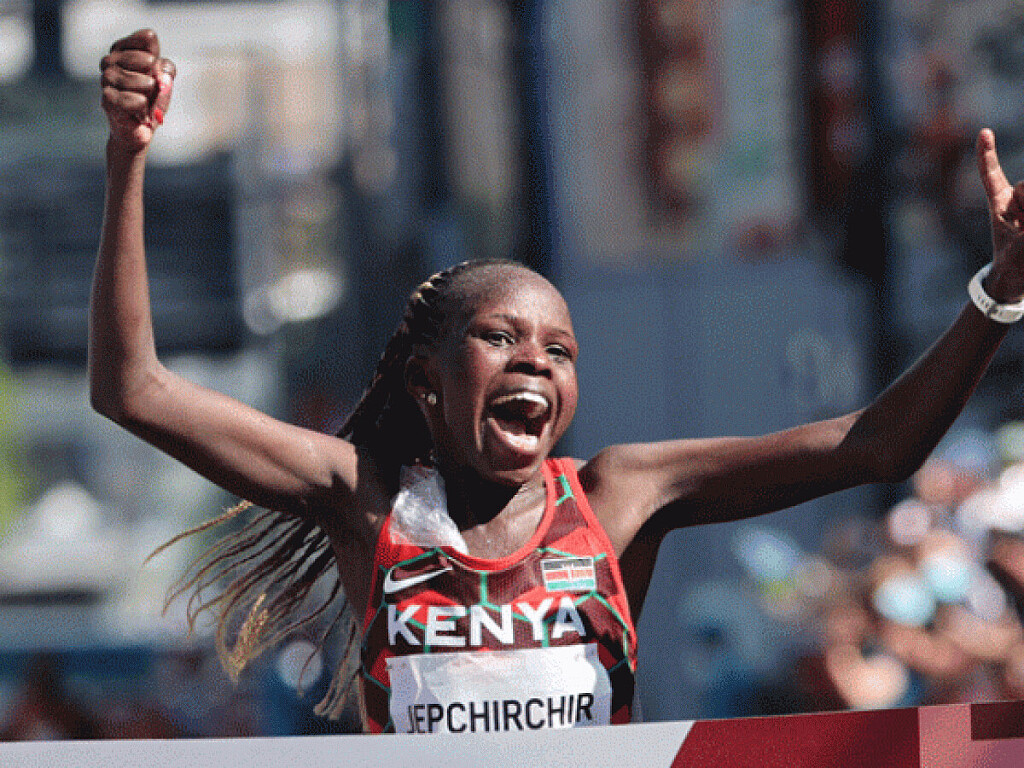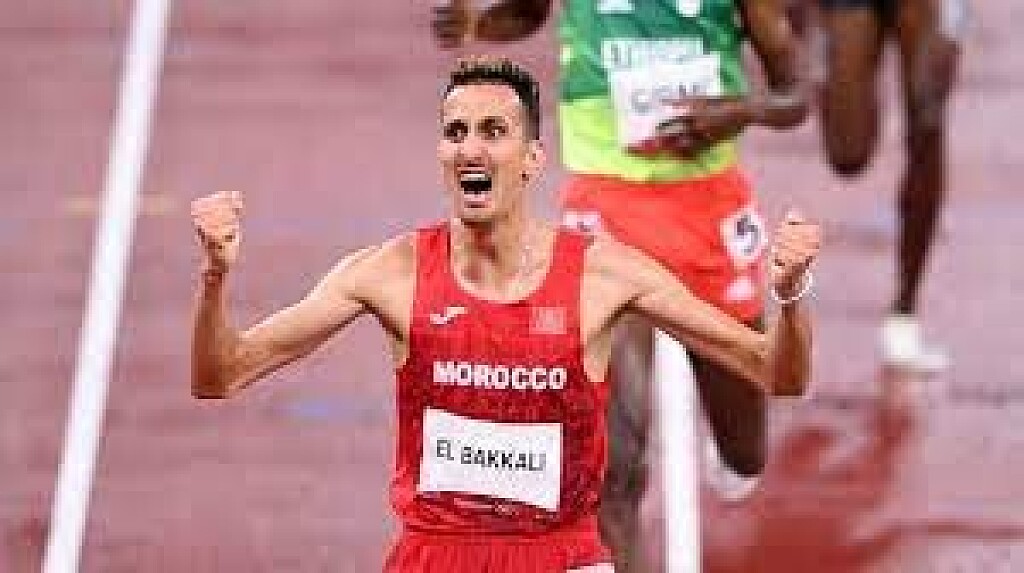Running News Daily
Top Ten Stories of the Week
5/25/2024
These are the top ten stories based on views over the last week.
Kenny Bednarek, Letsile Tebogo, and other top track athletes line up for the 200M sprint at the Prefontaine Classic
The 200-meter division is the subject of much discussion as the Olympic season develops further. While many athletes have talked about breaking the world record set by Usain Bolt, Kenny Bednarek is the one who recorded the fastest 200-meter time in 2024. However, he still has a long way to go and will be facing athletes of equal caliber at the Prefontaine Classic 2024.
Track Gazette took to X to post the list of athletes who will compete in the annual 200-meter sprint at the Prefontaine Classic 2024. It begins with Bednarek, who just won the Doha Diamond League, setting a world lead, a meet record, and a personal best. His time of 19.67 seconds has since become the standard, but the track world moves fast, and other athletes will soon be closing the gap.
Erriyon Knighton, a 20-year-old American prodigy, is also scheduled to compete at the tournament while being heavily favored for a spot in the Olympics. Furthermore, the list includes Botswanan sprinter Letsile Tebogo, who broke the 300-meter world record earlier this season. The 20-year-old has been confident since his ASA Grand Prix Tour and has not underperformed in any event.
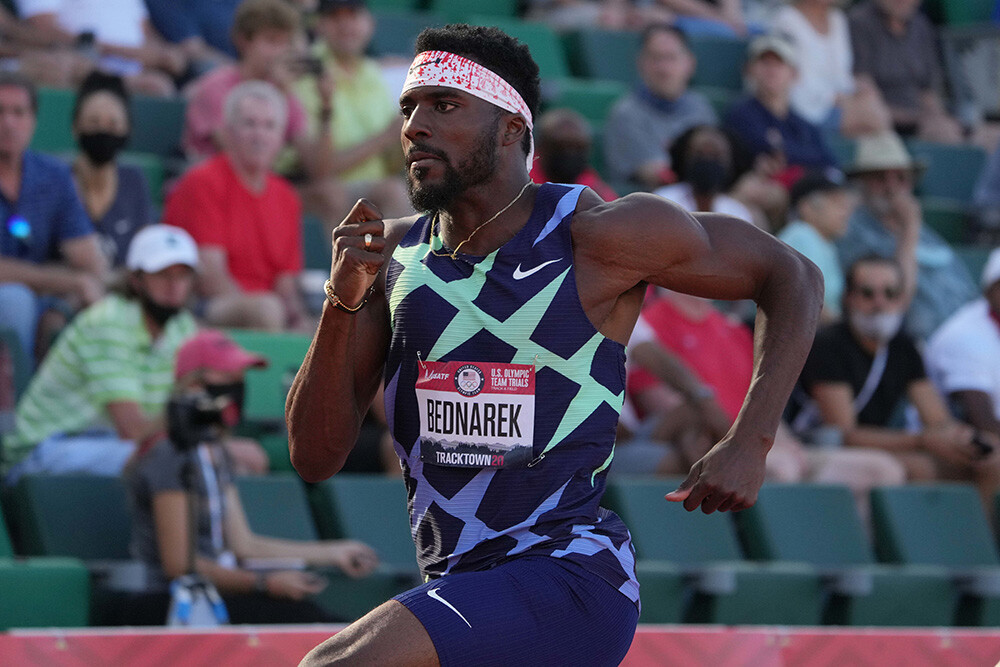
Even at the World Relays, Tebogo had the fastest time among all of the other teams in the finals and won the gold medal, making Botswana and the entire continent of Africa proud.
Meanwhile, Tebogo’s rival Courtney Lindsey will also compete in the Prefontaine Classic, as he was the first person to defeat the 20-year-old in the 200 meters at the Kip Keino Classic. On the other hand, Aaron Brown, a Canadian sprint standout, has registered for the tournament and hopes to have a successful 200-meter seasonal debut.
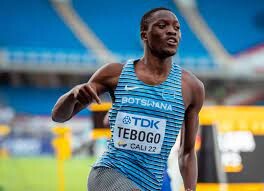
Another standout name on the list is Kyree King who ran an outstanding 20.21 with a +1.7 tailwind on the Qatari circuit and might pose a major threat to other runners, including his fellow Team USA athletes. In addition, Liberian sprinter Joseph Fahnbulleh, who delivered many inspiring words at the World Relays after securing his country’s ticket to the Paris Olympics, has also registered for the 200-meter sprint alongside Jeremiah Curry of the United States and Alexander Ogando of the Dominican Republic.
The event’s lineup of athletes with diverse talents has naturally gotten fans excited. The Prefontaine Classic has never disappointed and from the looks of it, 2024 will definitely take the legacy forward.
At the same time, fans can have varying expectations, and many took to X to make their feelings known.
American athletes Bednarek and Knighton will undoubtedly give their all, but for this fan, the Botswanan athlete appears to be the clear winner.
This season, the entire grid has demonstrated their prowess and this user believes there will be a new world lead.
(05/18/24) Views: 230Rahul Goutam Hoom
Former Boston Marathon champion finally receives prize money from a stranger after 10-year wait
The 2014 Boston Marathon winner Buzunesh Deba has finally her received prize money from a stranger after waiting for 10 years following Kenyan Rita Jeptoo's doping ban.
At the 2014 Boston Marathon, Ethiopian distance runner Buzunesh Deba gave her all and settled for second place with Rita Jeptoo wining the race in style.
However, in 2016, Jeptoo, the winner of the marathon, was disqualified by the Athletics Integrity Unit over a doping offense and Deba was now crowned champion but without being paid the prize money she deserved.
She has waited for 10 years, patiently, to receive her money and it was finally given to her, not by the race organizers, but by a stranger.

The race organizers insisted that they gave Jeptoo all the money, the $75,000 for winning the race and an extra $25,000 for setting the course record, an amount they never got back from her following her doping offense.
"She took my chance. I lose so many things. I thought everything is to change after I hear the news, but nothing,” Deba lamented last month, as quoted by CBS News.
However, someone, whom she claims to not know, decided to heal her wound and grant her the prize money. As reported by CBS News, Doug Guyer, a Boston College graduate and a businessman in the Philadelphia area, read about Deba's story in the Wall Street Journal and decided to offer her the money.
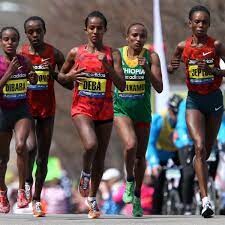
The Boston Marathon fan decided he would pay her out of his own pocket and he actually did it by sending Deba a cheque for $75,000 as he also considered paying her the remaining $25,000.
Following the news, the Boston Athletic Association explained that they are still in the process of recovering the prize money from Jeptoo.
In a statement, they said: “The Boston Athletic Association stands for clean sport and fair competition. Following the ruling by the Court of Arbitration for Sport, the B.A.A. began pursuit of reclaiming prize money awards from Rita Jeptoo.
“As the matter is still ongoing, we are unable to comment further at this time. We are in the process of attempting to recover the prize money awarded to Ms Jeptoo, so that it can be repaid to Ms Deba.
“While we believe that Ms Deba is due the prize money as she is the rightful winner of the 2014 women's race, there are policies held by World Athletics and supported by World Marathon Majors that we, along with the other members of the organization, follow.
“The B.A.A is still pursuing Ms Jeptoo to recover the prize money for Ms Deba, which the B.A.A. believes would be a just and fair result for her and all runners who follow the rules. As this matter is still ongoing, we are not able to comment further at this time.”
(05/17/24) Views: 190Abigael Wuafula
How to Reverse Taper to Build Your Mileage Back Up After a Race
Two run coaches offer details for between-race training.While training for a half marathon or marathon is anything but easy, following a well-designed program is pretty straightforward. You ramp up your mileage when the program says so, mix in speed work and intervals as instructed, and taper volume and intensity (sometimes begrudgingly) when the schedule dictates.
But, what happens after you check off that final “Race Day!” box on your calendar and float into the no man’s land between training programs? You’re tired and need to rest, but the idea of unstructured time off makes you antsy. Plus, your next race isn’t that far off. Following a “reverse taper” or “tapering up” allows you to bridge the space between events. The idea of the reverse taper is to gradually reintroduce running and increase volume while still prioritizing rest and recovery.
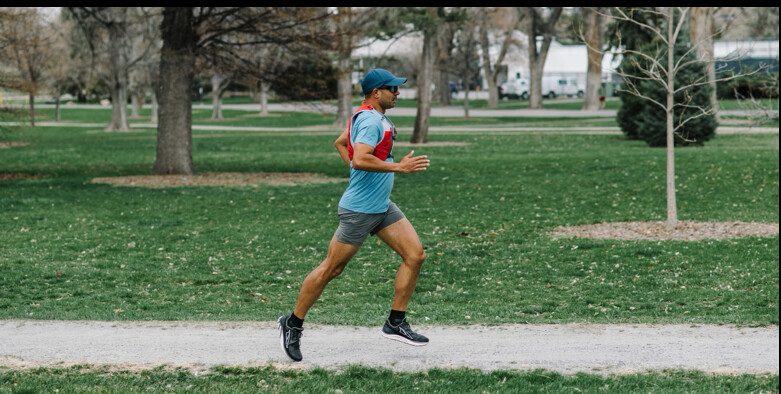
To better understand the logic behind tapering up, down, and in reverse, we spoke with Jessie Zapotechne, a coach with Adidas Runners in New York City and the founder of Girls Run NYC, and Raj Hathiramani, certified running coach at Mile High Run Club in New York City. Both are seasoned marathoners who have designed training programs and coached countless athletes through the ebbs and flows of race prep and recovery. Here’s what to know.
Understanding the Reverse Taper
The reverse taper is different from simply increasing volume to prepare for a race. When you’re in the midst of training and following a training plan, “weekly mileage increases are a gentle, rolling progression,” Hathiramani says. This approach compounds strength and endurance as the body adapts to new and increased training demands in order to reach a specific distance and pace.
Postrace, however, you’re working with a different baseline. “Racing wears down muscles, depletes glycogen, and suppresses your immune system,” Hathiramani says. Recovery—both physical and mental—should be your number-one priority.
“For longer races, this can include several days or a week of full rest before cross-training and resuming running, and for shorter or lower-effort races, you can focus on active recovery and cross-training with a quicker return to running,” Hathiramani says.
If you’re worried about losing all of the progress you made during training, don’t be. “Our fitness does not diminish as drastically as we think with an extended period of rest. Our bodies adapt to ‘defend’ our fitness level,” Hathiramani adds.
When you feel rested and ready to jump back in, you can start with some short, unstructured runs to see how you feel. (Don’t be afraid to shorten or bail on a workout if you’re feeling fatigued.)
Unlike a regular taper within training plans, there are fewer agreed upon rules about how to train without a specific goal or race plan. While you can use your previous training for guidance, Hathiramani emphasizes that this can be “tricky,” as the right approach depends upon your experience, training history, and distance of your last race.
“Generally, it’s fair to say after a rest period following a race, you can build back from the end of your base building phase,” he says. You don’t need to start at week one, but you also shouldn’t dive back into peak training.
Consider picking a week from the early-to-middle of the training plan as your reverse taper starting point. “It’s usually six to eight weeks into a [marathon] training cycle,” Hathiramani says.
6 Reverse Taper Tips
To taper up like a pro, and to avoid injuries and overtraining, consider the following tips and mistakes to avoid. 1. Progress Slow(er than Usual)
A weekly mileage increase of 10 to 20 percent is standard for most training plans, but remember that when you start a reverse taper, you’re not simply building mileage, you’re recovering. It’s okay to keep your volume the same from one week to the next or even reduce it, if needed.
2. Honor Rest Days
“A common mistake that I’ve seen athletes make is to skip a rest day because they are feeling good,” Zapotechne says. “This results in overtraining or feeling fatigued when it is time for them to continue on with the next planned workouts.”
If you crave movement on a rest day, consider an activity like restorative yoga or walking.
3. Don’t Dismiss Sharp or Persistent Pain
“Increased mileage will mean you are using more energy and thus need appropriate recovery, nutrition, and sleep. It is normal to feel more sore, tired, and hungry,” Hathiramani says. But anything more intense could signal injury. “A red flag is any sharp pain or persisting ache that gets worse when you run or is above a 4 out of 10 on a pain scale.” If you experience this kind of discomfort, see a doctor.
4. Keep Easy Runs Easy
“Easy runs coupled with intentional recovery sessions (e.g., stretching, mobility, preventative physical therapy, and sports massage) help achieve weekly mileage while letting your body regain strength after harder efforts,” Hathiramani says.
Use the talk test to keep your exertion easy and, if necessary, ignore your watch.
5. Don’t Overdo It With Interval Training
When you’re not yet on a training plan and are starting your reverse taper, Hathiramani suggests refraining from specialty runs, such as speed work. “For most runners, one interval training session a week is most effective to balance improving endurance with staying injury-free,” he says.
Save intervals, fartlek, and other speed runs for when you’re back on an official training plan.
6. Recover as Hard as You Train
“More mileage means more recovery and more sleep,” Hathiramani says. “Rest is important to maintain good mental health and optimal performance.” So, if you’re waking up before dawn to get in your morning run before the day starts, make sure you’re hitting the sack early, too.
A Refresher on the Traditional Taper
Reverse tapers and traditional tapers have equal importance. “Tapering,” or reducing your running volume and intensity in the days and weeks leading up to a race, is a very intentional race-prep strategy. Because whether or not you feel it (and you probably do feel it), your body has taken a hit, thanks to all those long runs, interval workouts, and tempo runs. “Tapering allows your body’s energy, strength, and health to return to optimal levels,” Hathiramani says.
Every taper looks a little different based on the type of race, the length and design of the training program, and how an athlete responds to training. “Most marathon plans call for a three-week taper and a 20 to 30 percent reduction in mileage each of those weeks, with little or no training faster than your race goal pace,” Hathiramani says.
A half marathon program may include just two weeks of tapering, and, if you’re training for a 10K, you might start cutting back a week to 10 days before race day.
During a training plan, after so many weeks of steadily accumulating more miles and tougher workouts, it can be surprisingly challenging to pump the breaks. “I feel I’m a better person in life when I’ve been able to go out and get my endorphins from running,” Zapotechne says. “Then taper time comes, and I have fewer runs, and they are shorter. This can often build up a lot of anxiety, and I’ve got energy now that does not have a place to be released.”
Here are a few tips to help round out your knowledge about the reverse and traditional taper:
1. Don’t Swap Running for Other Workouts
“In the past, I’ve made the mistake of deciding that, since I’m not running, I’ll go do that boxing class or other random workout that I’ve been meaning to do, and the result is then that I’m sore and I’ve overworked muscles that I was supposed to be resting,” Zapotechne says.
A taper isn’t the time to build muscle or experiment with different forms of exercise. If you feel like you have to do something, channel your energy toward active recovery practices, like mobility work, stretching, and meditation.
2. Don’t Try New Shoes (or Gear, Nutrition, or Routes)
The “nothing new on race day” adage should probably be amended to read, “Nothing new in the weeks leading up to race day.” By the time you get to a taper, you’ll likely have a formula that works for you—stick with it. Any adverse reactions to changes in your gear or habits (blisters and GI distress, anyone?) will rob you of quality recovery time.
3. Don’t Play “Catch-Up”
It’s normal for runners to miss an occasional workout on a training plan or feel like they didn’t work hard enough to prepare for a race. The taper period is not the time to play catch-up. “I coach athletes (and remind myself) that you cannot increase your fitness by doing more intense workouts the week before a race,” Zapotechne says. “You have to trust that what you have done is enough and that, ultimately, rest is your friend.”
(05/19/24) Views: 157Runner’s World
Caster Semenya determined to fight on against DSD regulations
Double Olympic 800-meter champion Caster Semenya appeared at the European Court of Human Rights (ECHR) on Wednesday to continue her challenge against World Athletics regulations that female athletes with differences in sexual development (DSDs) medically reduce their testosterone levels.
The ECHR ruled in July 2023, by a majority of four votes to three, that Semenya's original appeal to a Swiss Federal Tribunal against the regulations had not been properly heard.
But the Swiss, encouraged by World Athletics, have appealed that verdict to the ECHR Grand Chamber for a final and definitive decision. A verdict is expected in the coming months.
"This is an important day in my journey as a human being and athlete. It has been a long time coming," Semenya told reporters.

"The outcome of this case is very important. You need to pave out a way for young women so they don't face the injustice, the scrutiny of being judged, being dehumanized and being discriminated (against).
"I don't think this is about my career. It is about me being an advocate for what is right, to voice out for those who cannot fight for themselves."
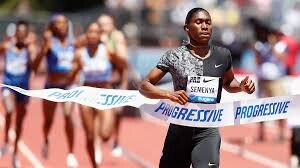
Should Semenya be successful it will open up the possibility of a fresh challenge to the regulations that effectively ended her running career, though she says her fight is now for future generations.
"I hope that the court's decision will pave the way for all athletes' human rights to be fiercely protected, for once and for all," she added.
Under the World Athletics rules, female athletes with differences in sexual development (DSDs) must lower their level of testosterone to below 2.5 nmol/L for at least six months to compete. This can be done medically or surgically.
Athletes competing in events between 400 meters and a mile must keep their levels below 2.5 nmol/L for 24 months.
World Athletics have denied there is any attempt to discriminate in their regulations.
"World Athletics has only ever been interested in protecting the female category. If we don’t, then women and young girls will not choose sport. That is, and has always been, the Federation’s sole motivation," the sports body said in a previous statement to Reuters.
"We remain of the view that the DSD regulations are a necessary, reasonable and proportionate means of protecting fair competition in the female category as the Court of Arbitration for Sport and Swiss Federal Tribunal both found, after a detailed and expert assessment of the evidence."
(05/18/24) Views: 139Sport
Rodgers Kwemoi's titles from 2016 stripped as he receives six-year doping ban
Rodgers Kwemoi has been slapped with a six-year ban by the Athletics Integrity Unit with all his titles from 2016 stripped.
Rodgers Kwemoi has been slapped with a six-year ban for the use of a Prohibited Substance/Method (ABP) with his results from July 18, 2016 disqualified.
Kwemoi was an upcoming road runner and had represented Kenya in several events including the World Championships and Commonwealth Games.
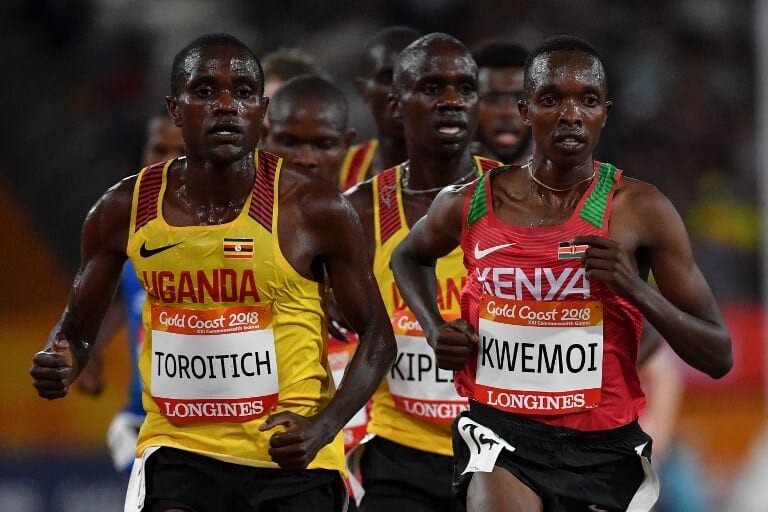
The 26-year-old will now be stripped off his Istanbul Half Marathon title, his 2018 Commonwealth Games bronze medal and his junior world title from 2016 in the 10,000m.
Meanwhile, the AIU reported that in May last year, they wrote to Kwemoi, notifying him of the abnormalities detected in his ABP profile and that they were considering taking charges against him. He was, therefore, invited to explain himself and the abnormalities but he did not respond within the given timeline.
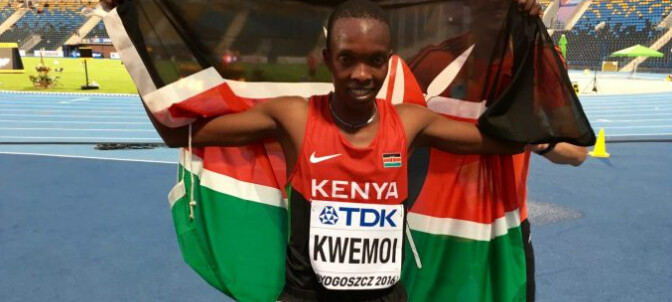
Kwemoi then responded later, claiming that the reason for the issue was a result of the natural variations due to the psychological responses influenced by the frequent changes in climate, altitude, and other environmental factors. However, his explanation was rejected by the panel.
However, Kwemoi still insisted that the explanation the AIU gave was not sufficient to conclude that he committed an anti-doping rule violation.
The Japan-based runner’s samples, according to the AIU, posted inconsistencies was before the World Under-20 Championships in 2016 and the AIU made the ruling for the ban to start from then and his results since then be disqualified.
(05/17/24) Views: 138Abigael Wuafula
U.S. star Sydney McLaughlin-Levrone will run the 400m hurdles at Paris Olympics
American track star Sydney McLaughlin-Levrone will compete in her fourth meet of the season on Saturday in Los Angeles, matching the total number of races she ran last year. Ahead of the race, McLaughlin-Levrone and her coach, Bobby Kersee, addressed her training focus for the 2024 Paris Olympics, stating that her plans are only to run the 400m hurdles at the U.S. Olympic Track and Field Trials next month, returning to her signature event after racing the flat 400m in an injury-shortened 2023.
Kersee confirmed Friday that McLaughlin-Levrone’s plans for U.S. Trials is to stick to the 400m hurdles, which take place June 21-30 in Eugene, Ore. The top three finishers in each event (if they have the standard) will make Team U.S.A. for Paris. When Kersee was asked what went into the decision, he said: “That’s her main event. That’s what we want to defend our Olympic championship in.”
“I think Sydney’s love is the 400m hurdles, and so that’s the number-one event,” Kersee told NBC Sports. “My job is to make sure that she gets ready for the one that she wants to do the most.”

McLaughlin-Levrone won the 400m hurdles at the Tokyo Olympics and lowered the world record on four separate occasions between 2021 and 2022, bringing it down from 52.16 seconds to 50.68. After the 2022 season, McLaughlin-Levrone said she wanted to expand to the flat 400m to see what was possible in that event, while not giving up the 400m hurdles.
The 24-year-old did not contest the 400m hurdles in 2023. McLaughlin-Levrone won the U.S. title in the flat 400m last July in 48.74 seconds, the world’s fastest time last year, and the second-fastest time in American history. She planned to race the flat 400m at the world championships in August, then announced her withdrawal eight days before the event, due to a small tear in her left knee that led to patella issues and tendonitis.
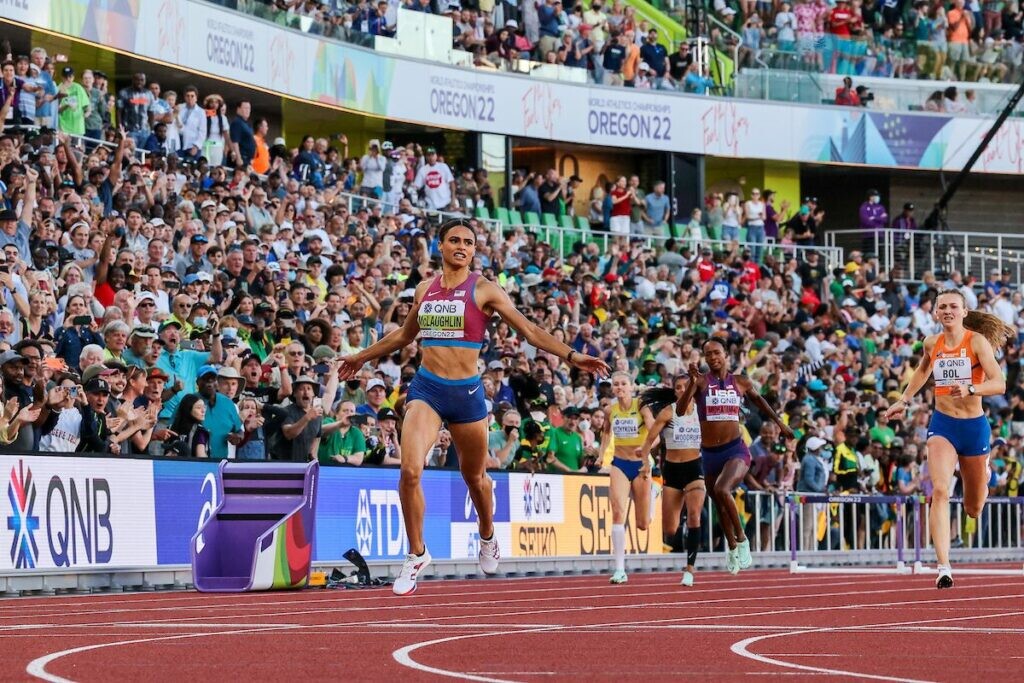
In McLaughlin-Levrone’s absence, Femke Bol of the Netherlands won the 400m hurdles event in Budapest last August in 51.70 seconds. Bol is the second-fastest woman in history in the event, with a personal best of 51.45. The 400m hurdles final could be the first matchup between Bol and McLaughlin-Levrone since the world record was last broken, at the 2022 World Athletics Championships in Eugene.
McLaughlin-Levrone has already raced three times this season in events outside the hurdles, and is on the entry list for the 200m at the USATF Los Angeles Grand Prix on Saturday, where she will face her U.S. teammate, Gabby Thomas.
Kersee also said that McLaughlin-Levrone, if she qualifies for the Olympics and is healthy in Paris, will also be available to run the mixed-gender 4x400m relay (final Aug. 3) and the women’s 4x400m relay (final Aug. 10).
(05/18/24) Views: 133Marley Dickinson
Sha'Carri Richardson will headline the women's 100m at the Prefontaine Classic
Track superstar Sha'Carri Richardson will headline the women's 100m at the Prefontaine Classic Diamond League event on 25 May at Eugene's Hayward Field.
The reigning world champion is set to make her 100m debut in the Olympic season, facing the 60m world indoor champion Julien Alfred of St. Lucia and Marie-Josée Ta Lou-Smith of Côte d'Ivoire.

Richardson is still on the hunt for her first win of this year's Diamond League season after finishing second over 200m at the Diamond League opener in Xiamen and third seven days later in Suzhou.

Last year's Prefontaine winner, Christian Coleman, is hoping to defend his 100m title. He will face off against Kenya's Ferdinand Omanyala and Jamaica's Ackeem Blake.
In the men's 200m, world silver medalist Erriyon Knighton is up against Olympic silver medalist Kenny Bednarek and Letsile Tebogo of Botswana.
(05/17/24) Views: 124Sven Busch
THE TRUTH ABOUT RUNNING AND WEIGHT LOSS
When approached realistically, running can be an excellent tool for weight loss and weight management, but don’t be fooled by the numerous myths surrounding them
People often start running to drop a few pounds. Hopefully, they fall in love with it, move beyond the number on the scale and continue running for its many other benefits; but for many people, it’s impossible to decouple running from the weight-loss goal. When done correctly, running can help people struggling with excess weight to shed pounds—and continuing to run can be effective way to keep them off. But the subject of running and weight loss is fraught with mythology. We delve into some of the problems with the weight-loss approach to running, including what actually works, what definitely doesn’t and how to keep running as part of your life, regardless of whether you lose weight.
Myth


You can run a marathon PB while dropping 10 pounds
You can do anything, but you can’t do everything. As a rule, you won’t boost performance at the same time that you’re purposely losing weight. Often, the opposite is true, says Kylee Van Horn, RD, owner of Flynutrition in Boulder, Colo. When you’re restricting your food intake, you’re unlikely to make performance gains, but unfortunately, we often equate being faster with being thinner.
“The first thing I tell a client with a weight-loss goal is that losing weight will not necessarily make you a faster runner,” adds Carla Rodriguez Dimitrescu, PhD, an Edmonton-based expert in nutrition and metabolism who works primarily as a running coach. It’s fine if weight loss is your goal—but don’t confuse it with performance, because the way that you’ll get faster isn’t necessarily the way that you’ll drop a pound a week (which should be the maximum weight you’re losing per week, unless advised otherwise by your doctor).
Myth
There is one “runner’s body”
Let’s be clear: there is no single body type that signifies “runner.” Often, people with weight-loss goals who run have a vision in their minds of the long, lanky phenotype often associated with marathoners. But runners come in all shapes and sizes—and if you run, you have a runner’s body, period.
Even in the professional sphere, there are different body types that excel at different types of running. “You would never tell a professional runner that he doesn’t look like an astrophysicist,” says Dimitrescu. “But for some reason, that astrophysicist is upset that he doesn’t look like a runner.” She adds that people have different somatotypes, which means that genetics and environment will both play a role in how running (or dieting, or strength training) changes your body. And if you really want to see how every body is a runner’s body, sign up for a local 5K race and look around you at the start.
Still, the “runner’s body” myth runs deep, and it can be hard to break free of the desire to be ultra-thin. That’s why Stevie Lyn Smith, RD, a board-certified sports dietitian based in Buffalo, N.Y., tries to focus her clients on health outcomes as well as esthetic goals. “We try to look at other goals, like running your personal best in a race,” she says. “Maybe you won’t achieve whatever physique is jammed in your mind as the ‘ideal,’ but you’re able to appreciate these non-body-focused victories.”
Myth
Lighter is healthier/faster
Here’s an oversimplified example: say you’ve had the stomach flu for a week. You’ve lost seven pounds during that time, thanks to days spent in agony. You head out for your first run since you got sick. How does it go? That’s right—dropping weight doesn’t always lead to speedy running, and while that’s an extreme example, it’s not much different from how you’d perform after a week of crash dieting.
“Slimmer is not necessarily better,” says Dimitrescu. “And too much weight loss or restriction can lead to issues like stress fractures, increased rates of illness and injury and chronic fatigue. That’s not going to make you healthier or faster.”
And unfortunately, Don Henley was right when he sang, ‘You can’t go back, you can never go back.’ If, at 46, you’re mourning your running prowess or body composition from when you were 17, you may need to come to terms with the fact that your body isn’t the same, and no amount of training or restricting will get you there. You need to find your new healthy, speedy body, says Van Horn.
Myth
Runners can lose weight faster by eliminating carbs
Skip any diet that eliminates entire macronutrient groups, says Dimitrescu. These fad diets come and go, and for someone who wants to be a healthy, optimized runner, they’re just not worth it. “I don’t like any restrictive diet that advocates for super low calories or eliminates a macronutrient,” she says.
“My priority is always that clients get plenty of protein—at least one gram per kilogram of body weight—and adequate carbohydrates. People have a fear of carbohydrates, but if you don’t eat enough carbs, you’re going to use the protein as your source of energy instead of using it to help build and repair muscle. You’re not doing any favours to your body if you don’t provide it with the energy it needs to do the work that you’re asking it to do.”
Myth
Running earns you calories
A common saying about running is that you run to eat. But really, you should be eating to run. “Don’t create a reward/punishment mentality around running and food,” says registered dietitian and runner Lindsey Elizabeth Cortes of San Antonio, Texas. “Try to focus on how you fuel and how you train as lifestyle choices and not things that need to be rewarded or punished.”
For example: it’s not, “I had a great run, so now I get to reward myself with nachos,” nor is it “I had a bad run, so now I can only eat a salad.” Instead, reframe to: “I ran, and now I’m craving nachos! Maybe I’ll have nachos with a salad.” Or, “I didn’t run, and I’m craving nachos. Maybe I’ll have nachos with a salad.”
Myth
Fasted running and intermittent fasting will speed up weight loss
Yes, fasted runs and intermittent fasting may potentially have some longevity and fitness-based benefits, but when it comes to weight loss, they’re not going to move the needle. In fact, they might be sabotaging your efforts. “For most people, things like fasted runs and intermittent fasting just equate to saving up their calories until the end of the day and then overdoing it in the evening, or using these so-called ‘healthy’ concepts to put a healthy spin on unhealthy, restrictive eating patterns,” says Van Horn. “But if you look into the research, there’s no benefit for doing fasted training for weight loss. In fact, we know that fasted running can raise cortisol levels, which can make weight loss harder.”
Intermittent fasting that takes place around your running window means that your runs aren’t being fuelled—which can both decrease your running performance and make it harder to lose weight, since you’re more likely to over-indulge later in the day. “At minimum, fuel around your workouts and during your training, so that you have enough calories on board to develop some adaptations and buffer the stress of the workout,” says Van Horn. She adds that if weight loss is the goal, you can reduce calories at meals that aren’t near your workout window. Calories should come out of meals that aren’t right before or after your runs. Lowering your portion of rice with dinner or cutting out dessert if you trained in the morning will give you greater results than skipping your post-run snack. (But keep your caloric deficit at a maximum of 500 calories per day.)
Things like fasting and fat adaptation (training your body to optimize fat over glycogen for fuel) may sound like they’re about weight loss, but the reality is that neither is likely to help you lose weight. Some research has found that when done under the right conditions, they might increase certain health markers or improve longevity, but they’re not the weight-shedding tools you may think they are.
Myth
The more you run, the more weight you lose
The natural inclination of someone who wants to lose weight by running is to run longer. Usually, the idea of training for a marathon or half-marathon gets floated around. But running shorter routes, with some harder efforts thrown in, will lead to better weight loss outcomes, because you’re able to get the benefits of the run cardio without as much stress on the body. And because the more you run, the more you need to fuel, chasing higher mileage is actually a bit of a fool’s errand, where weight loss is concerned.
“Endurance sport is not a weight management tool,” says Smith. “Volume-wise, if you’re running more than 10 hours a week while also working a normal job, spending time with family, dealing with all of those normal responsibilities, the long-term stress of that is not going to be conducive to weight loss. With a more appropriate training load for your current lifestyle, it’s easier for you to manage stress, and you’ll see better results.”
Myth
The number on the scale is the only number that matters
Rather than focusing on your weight in pounds, look at different metrics. “I like a combination of measurements with a soft tape measure, how a certain item of clothing fits, and scale weight done once a month,” says Van Horn. While body composition-measuring tools like a DEXA scan are often considered the gold standard, they are expensive and often difficult to access, so rather than spending time and money on that, focus instead on simple measurements that are replicable.
Daily weigh-ins are also a mistake, says Van Horn. Our bodies fluctuate from day to day, so scale weight on a daily basis can be disheartening. Instead, shift to weekly or monthly and look for a general trend rather than placing any importance on half a pound.
Finally, it’s not all about your body weight or size. Dimitrescu recommends looking at fitness and health markers, such as your resting heart rate, blood glucose levels, and HDL and LDL cholesterol. Often, these markers will improve quickly once you adopt a running habit and focus on healthy eating, and can help you see that even if the number on the scale isn’t changing, your body is.
In fact, research has shown that a focus on getting into the habit of running regularly actually is more effective for long term weight loss than focusing on the number on the scale—so it may be worth shifting your focus to the number of times per week you’re physically active, or minutes spent moving.
(05/19/24) Views: 123Peres Jepchirchir reveals what worries her ahead of Olympic title defence
Olympic marathon champion Peres Jepchirchir has explained why she is concerned as she prepares to defend her title at the Paris Games.
Olympic marathon champion Peres Jepchirchir is worried that she might not have enough time to fully prepare for her title defense in Paris.
Jepchirchir won the London Marathon last month and had to take a mini break before resuming her preparations for the Olympics.

Now just getting back, the former Boston and New York Marathon champion says she has limited time to get in proper shape but she is counting on her past experiences to lead her to glory on the tough course in Paris.
“I resumed fully my training for Olympics last week on Monday but the time is limited. Three months is not much for us marathoners, now I’m rushing to go through my programme,” said Jepchirchir.

“The way I see and I have heard about the course, it is a little bit difficult, but I have run New York and Boston which are hard courses but so long as I am in good shape, free from injuries. I will make it.”
Jepchirchir admits she cannot push her body so much at the moment after putting in so much for the London Marathon that she won in a new women’s-only world record of 2:16:16.
“I started resuming slowly, now I am doing 20km running and I think by the end of this month, I will be fully in my programme,” she added.
She has, however, shrugged off suggestions that Team Kenya will have it rough especially from Ethiopians, backing herself and her team-mates Hellen Obiri and Brigid Kosgei to triumph over their bitter rivals.
“I know the team is strong and to win Olympics again is not easy. It means extra hard work but I know we are going to make it. Team Kenya is strong, Ethiopia is strong but not stronger than us,” remarked the mother of one.
Jepchirchir was speaking after being awarded the Sports Personality of the Month for April by the Sports Journalists Association of Kenya in conjunction with electronics giants LG.
(05/17/24) Views: 116Joel Omotto
Moroccan star Soufiane El Bakkali out to deny Kenyans steeplechase title at Paris 2024 Olympics
Serial steeplechaser Soufiane El Bakkali is looking to make it difficult for Team Kenya to reclaim the steeplechase title at this year's Olympic Games in Paris, France.
Reigning Olympic champion Soufiane El Bakkali is out to ensure that Kenyans have a hard time reclaiming the steeplechase title following his recent declaration.
Kenya have been dominant in the steeplechase for years, and since they took the title during the 1984 Los Angeles Olympic Games, they managed to keep the title until the Moroccan took it during the delayed 2020 Tokyo Olympic Games.

He took the title from Conseslus Kipruto who had won it during the 2016 Rio Olympic Games and the Kenyan charge will be hoping to reclaim the title when they go for the Paris 2024 Olympic Games.
However, El Bakkali, the reigning world champion, has been a nightmare to the Kenyans and does not look at stopping the tormenting anytime soon.
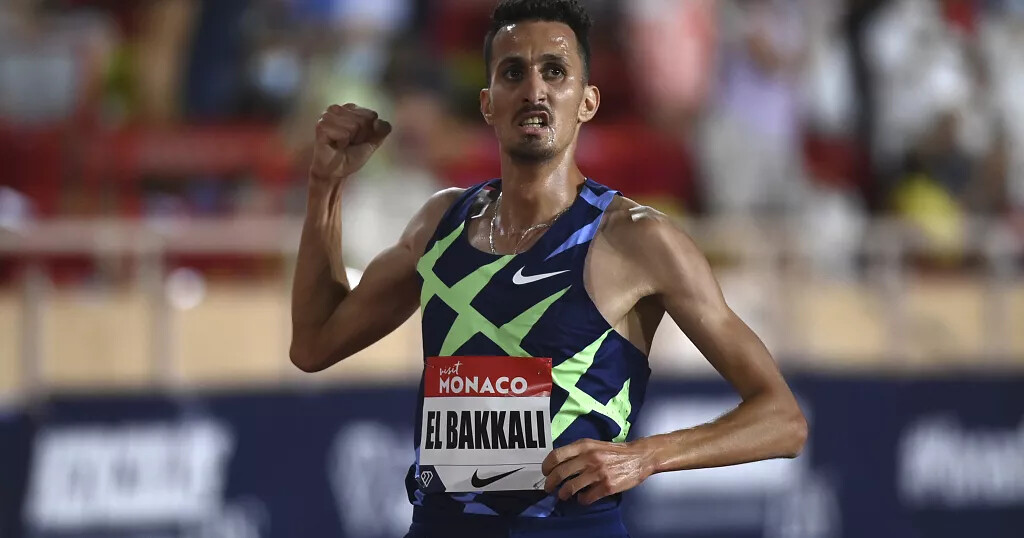
After his triumph at the Diamond League Meeting in Rabat, the Moroccan superstar declared war on Kenyans, noting that he is going to train hard and reclaim his title at the Olympics.
“I'm so happy for winning in front of my supporters as winning at home has always a different taste. I would like to thank my parents, my coach, and the Moroccan federation for their support throughout the moment of my injury. I will start my preparation for the Olympic games where my goal is to keep my title,” Bakkali said after the race.
The serial steeplechaser noted that he had suffered an injury setback at the start of the season that prevented him from competing many events but he was glad to have won the race upon his return.
“As I stated yesterday in the press conference, I suffered from an injury which stopped me from participating in many events.
“This year is very important for me but the injury came at a very bad time. I was hesitating to participate today but I eventually decided with my coach to run,” he said.
(05/20/24) Views: 116Abigael Wuafula





